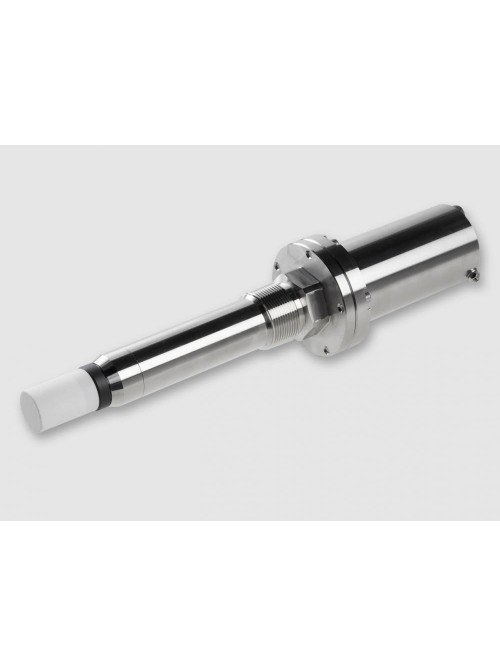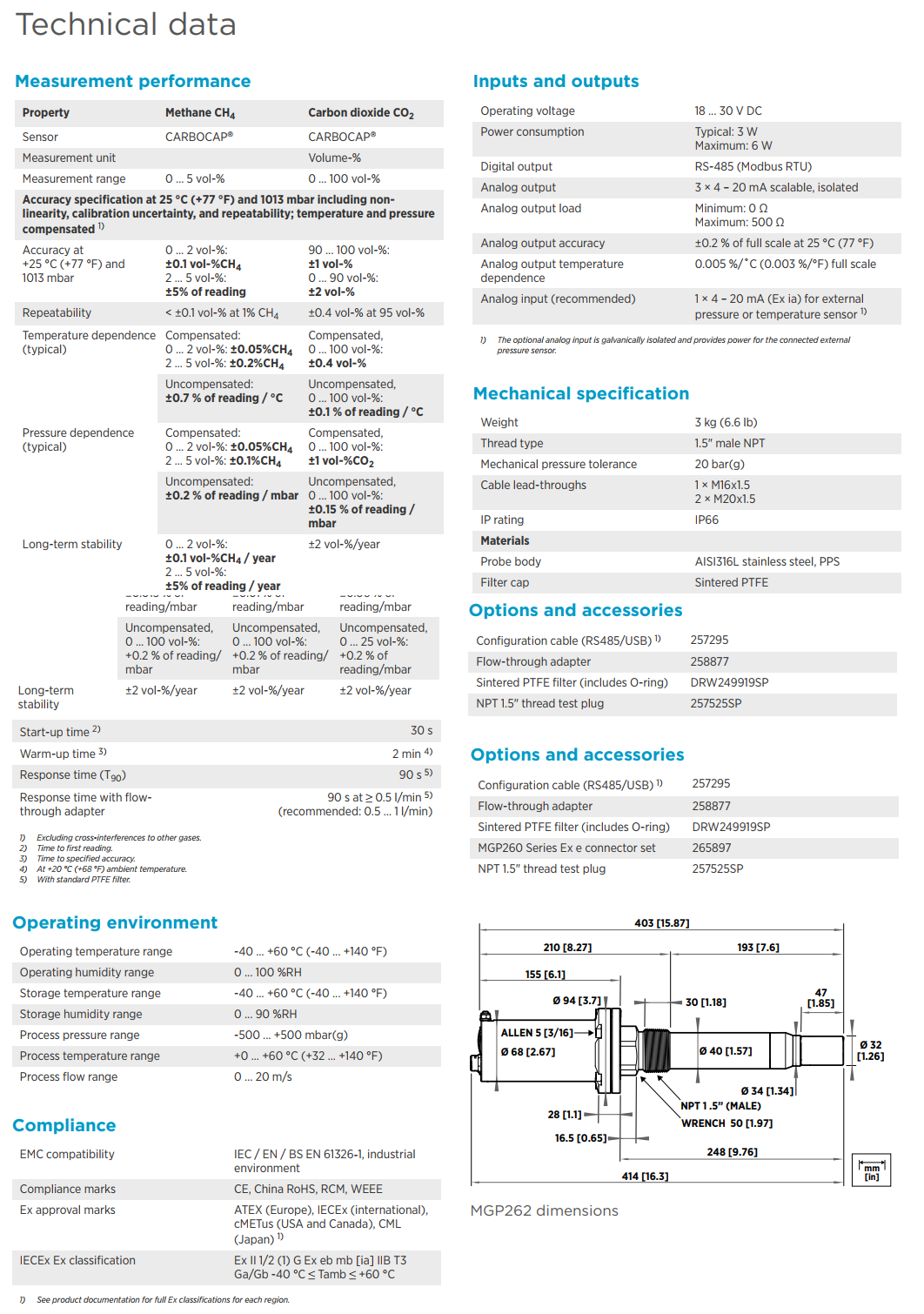



Stop the loss. The Vaisala CARBOCAP® MGP262 continuously measures the methane concentration in offgas from your biogas upgrading unit to keep you from letting your profits go up in the air.
Focus on what matters. The MGP262 is the answer to the problem that some methane slip always occurs in the upgrading process. It helps you adjust your process so that you avoid greenhouse gas emissions while you can concentrate on producing the best biomethane possible
|
The Vaisala MGP260 family brings our robust science to help optimize your biogas production and upgrading. Reliable, always accurate and Ex certified. Robust construction meets automatic calibration and zero sampling equipment needed. Just a better process. Biogas production provides enormous opportunities for both people and the planet. However, plants still suffer from inefficiency. It is estimated that the average biogas plant could have a substantially better yield when performing optimally. The answer to solving this is better measurement. Vaisala has launched the first ever 3-in-1 measurement probe, which is very easy to install and use. Are you ready to put the pedal to the metal and accelerate your bio-engine? WHY SHOULD I CARE?Finance meets green. That’s MGP262. When it comes to offgas from upgrading biogas to biomethane, CO2 can be and should be recovered for further use in e.g. greenhouses and the food industry, or it could be converted to further biomethane through methanization or the power to gas process (P2G). It makes both ecological sense and financial sense — especially since your CH4 emissions cost money in the form of carbon credits. TRUSTED TECHNOLOGYMGP262 is based on the groundbreaking and award-winning technology of the MGP261 multigas instrument and the underlying CARBOCAP® infrared sensor technology, which is a cornerstone of Vaisala’s industrial gas measurement portfolio. Its repeatable reliability and low cost of ownership make it a powerfully simple solution to a problem that is both economic and ecological. Offgas: How much is too much?Some methane always goes to the exhaust stream and this methane slip can be even larger than in a Combined Heat and Power engine — if you are not managing the process correctly. Should more than 2% of incoming methane end up in the atmosphere, your greenhouse gas emissions would be the same or worse than CO2 emissions from fossil fuels. In fact, emission limits for methane are usually even stricter. Offgas without RTO or other forms of methane removal typically consists of over 95% CO2, ~1% CH4, with the rest typically being nitrogen and traces of oxygen and water vapor. CH4 emissions can be reduced by carefully adjusting your upgrading process with inline process monitoring, and the MGP262 is a perfect tool for that. If you use Regenerative Thermal Oxidation (RTO) to further reduce methane emissions, an inline methane measurement before the RTO will be useful. The bottom line is that unless you pay attention to CH4 emissions in the offgas you will lose money and harm the environment. |
Features
|

Download |
.